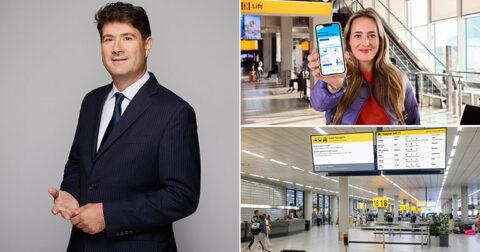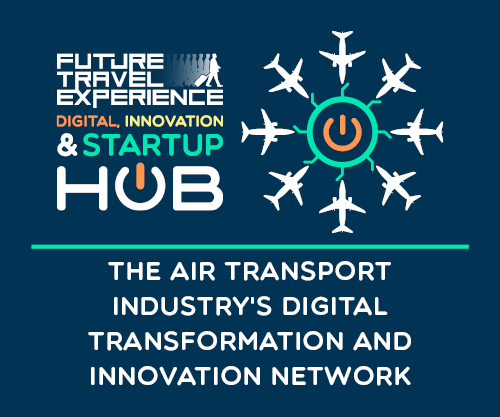Energy & sustainability innovation is no longer a future goal, but a critical necessity for growth in line with the global industry’s commitment to reaching net zero carbon emissions by 2050. Indeed, sustainability features in FTE’s ‘12 technology and CX trends that can enhance airline and airport operations in 2025’. In this deep-dive article – ahead of their participation at the FTE World Innovation Summit (Pittsburgh, 13-15 May 2025) – Pittsburgh International Airport, Connect Airlines, Edmonton International Airport and Carnegie Mellon University share their insights into scaling the use of Sustainable Aviation Fuel, electric, low carbon energy, hydrogen and more across air transport.
PIT establishing a new paradigm as an energy hub, not simply a transportation hub
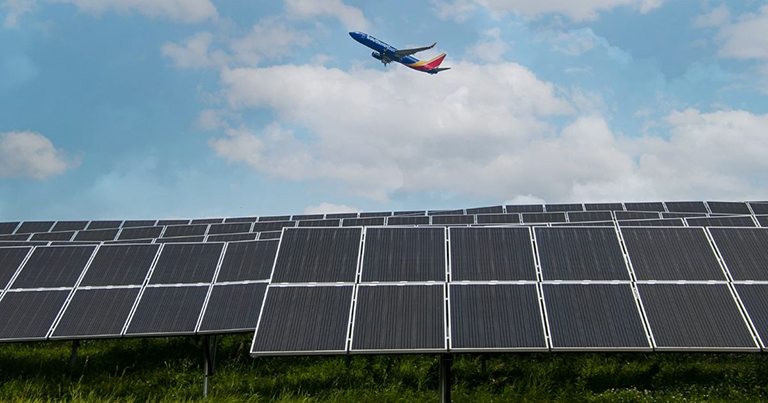
Pittsburgh International Airport (PIT) – host of the FTE World Innovation Summit taking place on 13-15 May 2025 – is a trailblazer in sustainability. Its innovations include the first-of-its-kind microgrid, powering the entire facility – including the new terminal opening this year – with natural gas and solar energy. Ahead of his participation at the FTE World Innovation Summit, Chad Willis, Director, Planning, Environmental, & Sustainability, Allegheny County Airport Authority (ACAA), shares his insights with Future Travel Experience.

“Here at PIT we are working to establish a new paradigm where an airport can demonstrate that it has a role as an energy hub and not simply as a transportation hub,” Willis explains. “All of the users of an airport have a tremendous need for energy – electricity, hydrogen and fuels – and we believe that we can facilitate cleaner and more resilient options for those users.”
PIT – a Corporate Partner of the FTE Digital, Innovation & Startup Hub – is currently working with partners to build out infrastructure to produce hydrogen and Sustainable Aviation Fuel onsite to provide clean fuel options to users. “Furthermore, we are working with partners across multiple industries to position PIT as the preeminent location to test new technology and equipment – things like alternative fuel vehicles and aircraft,” says Willis.
The new terminal at PIT opens this year and has been developed with energy efficiency and sustainability at the forefront. “Our new terminal will be LEED certified at the Gold level and our parking garage will be certified by Parksmart at the Silver level,” Willis shares.
There are various items required to meet these sustainability targets, but Willis highlights some interesting items including:
- Diverting at least 50% construction waste from landfills: The project is at ~99% diversion.
- Sourcing at least 15% recycled materials: The project is at ~39%.
- Energy-efficient systems that are powered by solar.
- Open space and landscaping to provide outdoor accommodations.
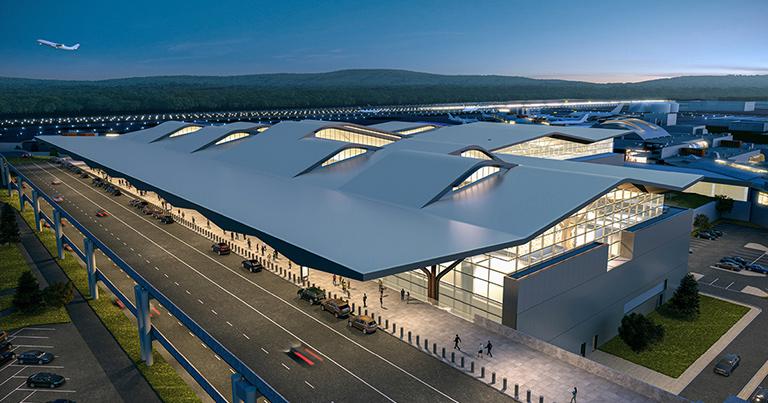
“The ACAA sustainability ethos is based on resilience with a requirement to be both environmentally and financially sustainable in all of the actions we take,” Willis adds. “Furthermore, we are interested in providing an ecosystem that will allow for our stakeholders to meet their sustainability goals whatever those may be.”
Looking ahead, Willis is eager to participate at the FTE World Innovation Summit, which is free to airlines and airports and will bring together over 400 air transport industry innovators for a three-day interdisciplinary series of conference sessions, interactive workshops, tours of the new terminal at PIT and across key innovation sites across Pittsburgh, and networking opportunities. “We are very excited to be a part of the discussions at the FTE World Innovation Summit as these always lead to new ways of solving the industry’s problems. The message I have for the industry is that airports can absolutely be an integral partner in furthering the sustainability objectives of those that operate within its ecosystem, so let’s work together and do great things.”
See the FTE World Innovation Summit agenda >> Register for the FTE World Innovation Summit >>Connect Airlines an industry innovator in zero carbon technology adoption
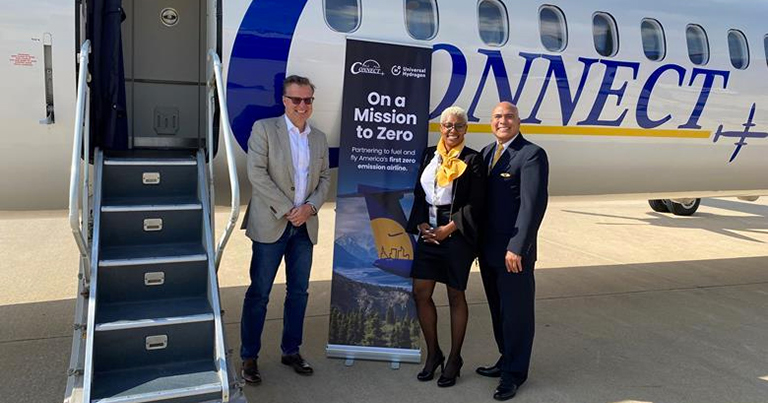
John Thomas, CEO, Connect Airlines, is participating in an Energy & Sustainability session at the FTE World Innovation Summit (Pittsburgh, 13-15 May 2025) focused on ‘How do we ensure air transport gets the green credentials it needs at best speed?’ Ahead of the event, he shares a preview of his perspective with Future Travel Experience.
“The opportunity already exists today with the replacement of aging uneconomic 50-seat regional jets in the U.S. with existing turboprop technology in the likes of the ATR72 and Q400s,” Thomas explains. “The turboprops reduce carbon emissions by roughly 40% and can operate at significantly better economics than the 50-seat RJs. The turboprops under the Connect Airlines business model will also provide a better customer experience than current regional aircraft – for example, the leading-edge Starlink WiFi system is now certified on both the ATR72 and the Q400 that provides free gate-to-gate connectivity for passengers. Both aircraft have larger overhead bins than 50-seat regional jets and the Connect business model calls for the introduction of a premium economy product, both soft and hard, on turboprops – a world first. And all for the same block time as regional jets on the routes that we will serve.”

Connect Airlines is passionate about moving to alternative fuels both from an environmental and an economic perspective. “The regional airline industry in the U.S. is broken, relying on a broken business model (Capacity Purchase Agreements), and more exposed to the highly volatile price swings in the price of Jet-A that for decades have been the bane of the entire airline industry,” says Thomas. “The move to liquid hydrogen eliminates the largest financial risk factor in the regional airline industry – the daily swings in Jet-A prices – one of our largest input costs – being replaced with liquid hydrogen prices that are tied to long-term power supply contracts. And importantly, while the global airline industry is alone in its battle on Jet-A supply and price volatility, by becoming a major hydrogen/energy consumer alongside the rest of the U.S. industrial base, we as an industry are no longer alone in holding upstream suppliers accountable. So, the move to hydrogen is more about making the regional airline industry more energy and hence financially resilient.”
As an industry innovator in terms of zero carbon technology adoption, Connect Airlines believes the sweet spot in terms of alternative fuels, at least in regional aviation, is liquid hydrogen that powers an electric engine through fuel cell technology. “This combination is 11 times more energy efficient than current jet engines using Jet-A,” Thomas explains, highlighting other solutions the airline is developing to ensure the most efficient use of the technology:
- “The use of fixed cryogenic tanks in the rear of the aircraft that for our standard mission will result in the loss of less than 15% of passenger seats.”
- “The use of high-speed liquid hydrogen transfer technology that today transfers liquid hydrogen at the rate of 60kg/minute, meaning you can refuel a hydrogen aircraft at the gate in under 15 minutes.”
- “The use of mobile tankers that, coupled with the high-speed transfer technology, allow a hydrogen-powered aircraft to be refuelled at the gate just like any aircraft today.”
- “Producing liquid hydrogen onsite at the airport. Given each of our aircraft will use 1mt of liquid hydrogen per day, being co-located with the production infrastructure greatly simplifies the supply chain. We have already signed the world’s first land access agreement for on-airport hydrogen production, which is with a major U.S. hub airport. Importantly, this also sets up the airport as a hydrogen hub and because of the scale of our own consumption, allows us to produce liquid hydrogen well down the cost curve, allowing other modes of transportation to share in our low-cost production.”
Looking ahead, Thomas is keen to participate in the FTE World Innovation Summit. “There is a lot of innovation in the airline industry at the moment, much of which is under the radar. So, the FTE World Innovation Summit provides a great opportunity to better understand what is going on.”
See the FTE World Innovation Summit agenda >> Register for the FTE World Innovation Summit >>YEG supporting SAF while actively pioneering hydrogen and new clean technology applications
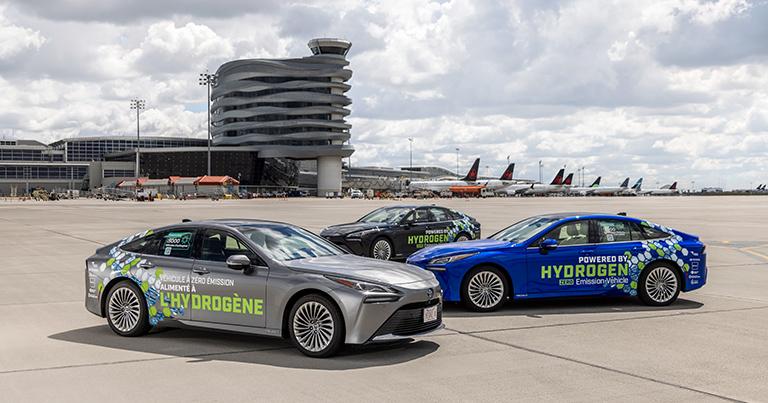
Edmonton International Airport (YEG) believes in developing the airport as an energy hub. Its approach is pragmatic – supporting Sustainable Aviation Fuel (SAF) while actively pioneering hydrogen and new clean technology applications. “We are engaging with suppliers and airlines to ensure future availability and feasibility for our region,” shares Marion N. Chivot-Legris, Director, ESG & Sustainability Strategy, Edmonton International Airport. “For example, in our efforts to advance low-carbon energy, we are working closely with partners – airlines and ground handlers – to support the transition to electric ground operations. However, while electrification plays a key role in decarbonization, it is not a one-size-fits-all solution. Our electricity grid has a different energy mix compared to some other Canadian provinces, and our harsh winters present additional challenges that must be considered in our approach. We work closely with the key Edmonton Metropolitan Region’s players on the regional Hydrogen Hub. We are actively integrating hydrogen into our ecosystem through the whole value chain, starting from ground vehicles to exploring infrastructure development or hydrogen light- or heavy-duty vehicles, to be ready for hydrogen application in aviation. Scaling these solutions requires infrastructure readiness, regulatory alignment and strong industry collaboration – all areas where YEG is taking a leading role. We need to learn from each other, including learning from challenges.”
The Edmonton Region Hydrogen HUB (ERH2) has recently relaunched, further solidifying the Edmonton Region as Canada’s leader in hydrogen innovation. The Edmonton Region Hydrogen HUB is a collaborative initiative dedicated to advancing a thriving hydrogen economy in the Edmonton Region and beyond. Bringing together municipalities, industry and associations, the HUB focuses on building a robust hydrogen value chain through collaboration, system integration and policy advocacy. Leveraging the region’s world-class hydrogen production facilities and strategic infrastructure, the HUB drives innovation, promotes decarbonization and stimulates economic growth, positioning the Edmonton Region as a global leader in sustainable hydrogen development.

“This next phase will be supported by several key partners: Alberta’s Industrial Heartland Association (AIHA), Edmonton Global, Alberta Innovates Hydrogen Centre of Excellence and Edmonton International Airport (YEG),” Chivot-Legris explains. “YEG remains at the forefront on these topics. For instance, for several years we have been working on partnerships with key players to develop hydrogen refuelling infrastructure to support ground operations and, eventually, aircraft. The airport currently has a hydrogen fleet, including one airside terminal operations vehicle, and is working on developments for the future. Our size and location within Canada’s hydrogen corridor make us a strategic hub for upcoming hydrogen-powered aviation, including regional aircraft developments. Our goal is to make YEG an aviation hydrogen testbed, accelerating adoption across the industry.”
YEG is a trailblazer in sustainability, including plans for the world’s largest solar farm at an airport, and is driving innovation across multiple areas. “Alongside our hydrogen initiatives, we are continuously upgrading airport facilities – improving lighting, HVAC and overall energy efficiency to reduce consumption,” says Chivot-Legris. “These efforts are essential to our decarbonization strategy. We are committed to achieving net-zero emissions – with a target to be net zero by 2050 – prioritising airport-related emissions (Scope 1 & 2). To stay accountable, we have also set interim carbon reduction targets as part of the Net Zero Challenge led by the Government of Canada, providing key milestones to ensure we remain on track toward our long-term goal. Optimising operations will definitely be a critical strategy in lowering our emissions and building a more sustainable airport.”
The YEG sustainability strategy is built on net-zero emissions and environmental resilience, with a strong focus on collaboration and innovation. “At YEG we have a holistic approach to sustainability – beyond environmental initiatives, we integrate social impact efforts, including partnerships with Indigenous communities and climate-related risks and opportunities analysis, ensuring a comprehensive and inclusive path to resilience,” Chivot-Legris shares. “We recently explored our physical and transition risks and opportunities to be better prepared. We believe that collaboration is key – we partner with airlines, fuel providers, technology firms, communities, tenants of our Airport City Sustainability Campus and government partners to scale sustainable solutions. Public-private partnerships drive progress on critical initiatives, such as hydrogen and SAF infrastructure. We work closely with industry and government agencies as policy alignment is crucial to ensure regulatory frameworks evolve to support the industry’s sustainability goals.”
Looking ahead, Chivot-Legris is participating in an Energy & Sustainability session at the FTE World Innovation Summit (Pittsburgh, 13-15 May 2025). “I can’t wait to connect with global leaders and dive into real, actionable solutions for aviation’s energy transition. Events like this aren’t just about ideas – they’re about making things happen! They also inspire me with fresh perspectives to bring back to my colleagues, reinforcing my passion and commitment to innovation and sustainability. It’s a chance to collaborate, spark new partnerships and push the industry forward. So, don’t miss out – join the conversation, share your insights and help shape the future of sustainable aviation!”
See the FTE World Innovation Summit agenda >> Register for the FTE World Innovation Summit >>Carnegie Mellon University: “There is a huge opportunity for clean energy innovation in the air transport sector”
Costa Samaras, Director, Wilton E. Scott Institute for Energy Innovation; Professor, Civil and Environmental Engineering, College of Engineering, Carnegie Mellon University (CMU), is participating in an Energy & Sustainability session at the FTE World Innovation Summit (Pittsburgh, 13-15 May 2025) focused on ‘How do we ensure air transport gets the green credentials it needs at best speed?’ Ahead of the event, he shares some insights with Future Travel Experience.

“There is a huge opportunity for clean energy innovation in the air transport sector. Now is the time for leadership to ensure that the future of air transport is clean and carbon neutral,” Samaras explains. “I’m so excited about the great work the Scott Institute and CMU is doing to deliver energy and climate solutions. These are the technologies, systems, and policies that will tackle climate change, and make energy clean, affordable, reliable, and resilient. At the Scott Institute, we have over 160 faculty affiliates from all parts of campus. We give out seed funding each year to grow new energy research projects. We also create and accelerate climate and energy research initiatives. The Institute brings together the climate and energy community by hosting a range of events, and we support founders and innovative startups in climate and energy.”
Looking ahead, Samaras is eager to participate in the FTE World Innovation Summit. “Pittsburgh International Airport has been a global leader in energy innovation and resilience. We’re proud to collaborate to help translate the latest research into practice for sustainable aviation fuel technology pathways, energy resilience, and more,” says Samaras. “Pittsburgh is a city of innovators and problem solvers. Gathering global leaders from the air transport industry in Pittsburgh for the FTE World Innovation Summit provides an opportunity to help write the future of this important industry.”
See the FTE World Innovation Summit agenda >> Register for the FTE World Innovation Summit >>FTE World Innovation Summit agenda now live! Cutting-edge sessions, interactive workshops, innovation tours & much more
The agenda for the FTE World Innovation Summit, hosted by Pittsburgh International Airport on 13-15 May 2025, which is free to airlines and airports, is now live. Explore the first wave of confirmed speakers, sessions, interactive workshops, innovation tours and more. Highlights include exclusive guided tours of PIT’s groundbreaking new terminal ahead of its grand opening, plus curated innovation tours across Pittsburgh showcasing companies at the forefront of technology and sustainability. Keynotes include Sean Doyle, CEO of British Airways; Bernadette Berger, Director of Innovation at Alaska Airlines; and John Thornton, CEO of Astrobotic. Three dynamic conference tracks – Advanced Technology, Energy & Sustainability, and Future Airports – will feature insights from MAG, Frontier Airlines, CMU, Fraport, Connect Airlines, Edmonton International Airport, Noida International Airport, Heathrow, Munich Airport International, Gensler and more. We’ll be adding even more exciting content in the lead-up to the event – stay tuned!
See the FTE World Innovation Summit agenda >> Register for the FTE World Innovation Summit >>You may also be interested in
12 technology and CX trends that can enhance airline and airport operations in 2025



